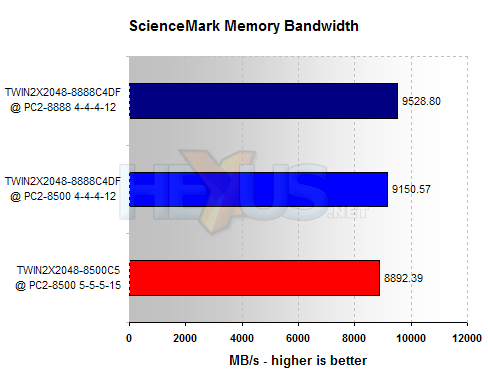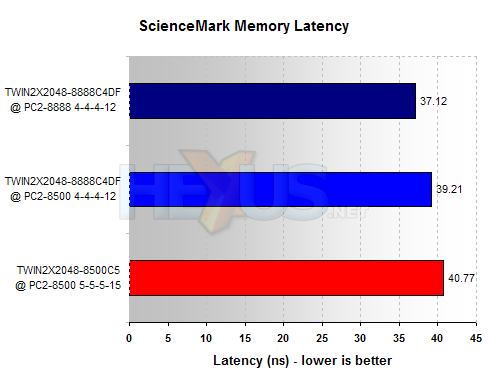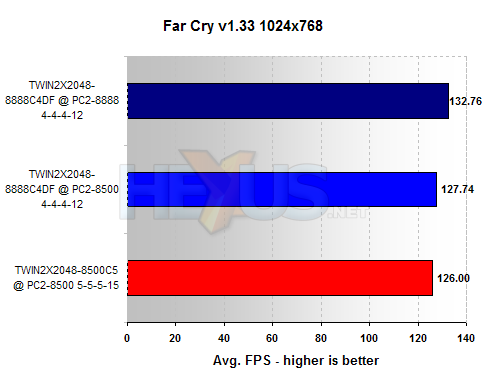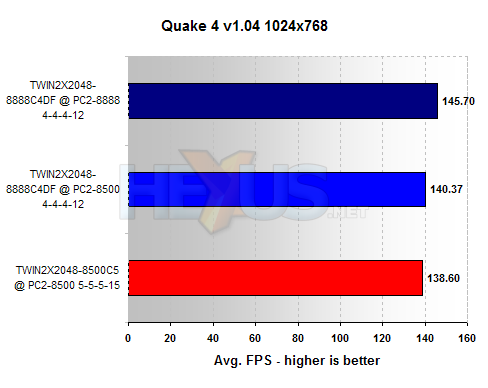Performance
We'll run through our performance testing first, ScienceMark will kick things off.
ScienceMark

At 1111MHz, the Dominator TWIN2X modules are less than 500MB/s away from the mighty 10GB/s milestone. They're 7% faster than the old 8500C5 modules and thanks to lower latencies, even commands a lead at 1066MHz operating frequency.

The latency results are in the order we'd expect. Remember that memory timings are based on cycles, so at a higher clock speed each cycle takes less time. This is demonstrated in the top two results, where the same timings yield different latencies.
DivX

It looks here like extra memory bandwidth makes a difference in our DivX encoding test. However, remember that the CPU frequency for the topmost result is higher. In fact, the increase in CPU speed is more or less identical to the speed increase in the encoding time. Couple this with the lack of memory latency influence over the encoding time, and we can safely say that the memory doesn't provide any boost to our encoding times.
Far Cry
On to the gaming benchmarks, where we're looking to see if there'll be any noticeable performance improvement.

There's a 5% difference between slowest and fastest here. What we can see here is that increasing bandwidth seems to have a greater affect than lowering latencies, but not by much. Also remember the CPU is running slightly faster for the winning result.
Quake 4

The story is the same for Quake 4, with the exact same percentage performance gap.
Our thoughts on 'stock' performance? Yes, it's the fastest memory we've ever seen, but no, you won't really notice.









